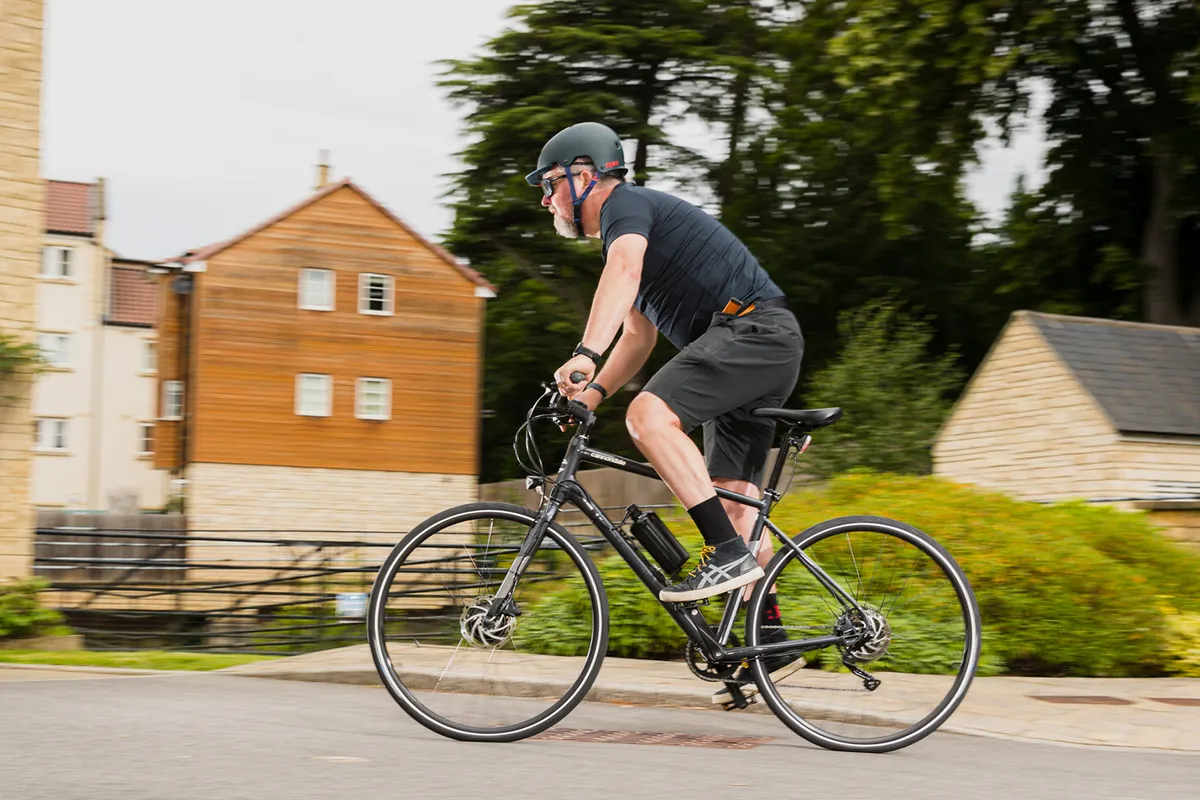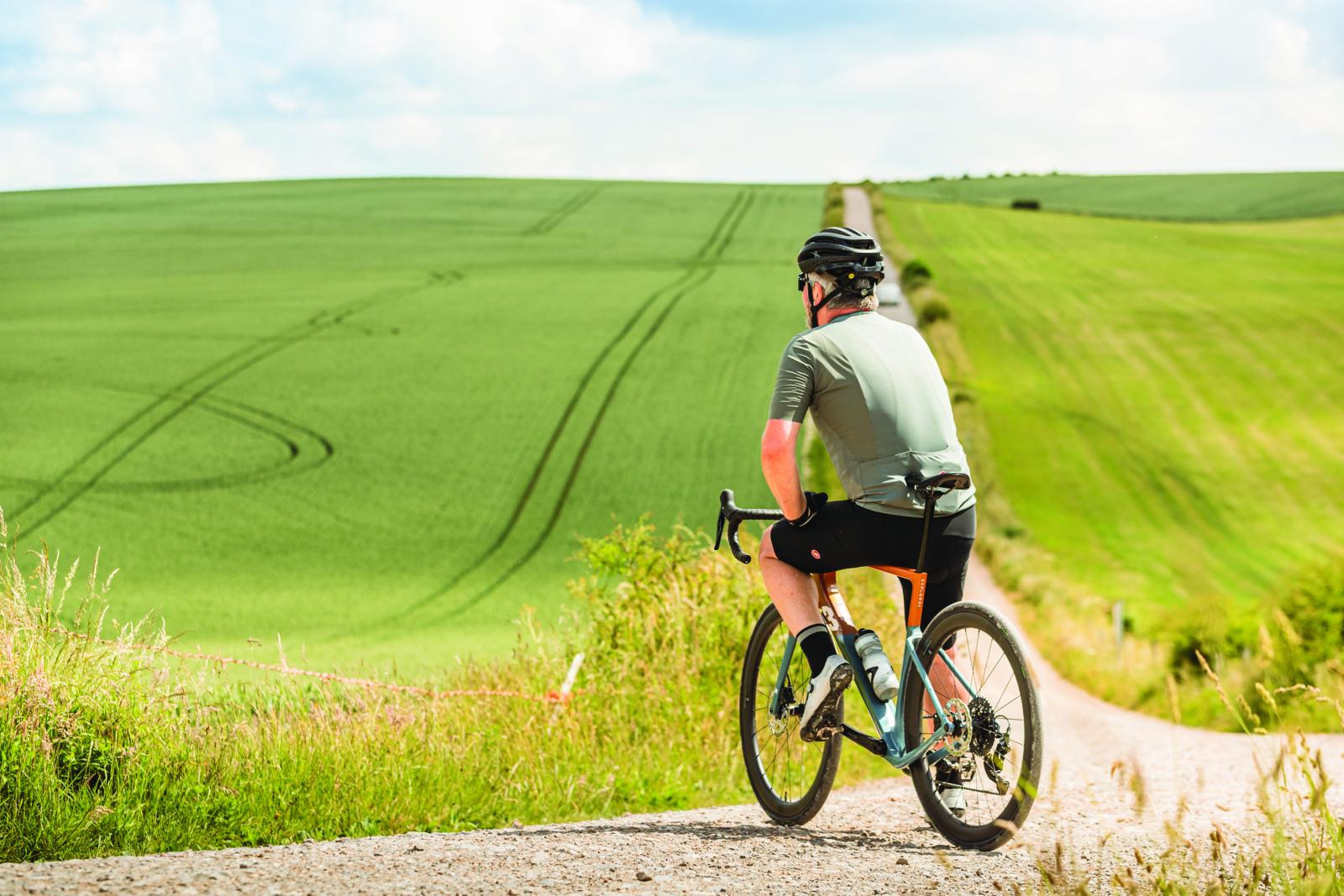Back in 2008, UK based Cytronex launched what was (and still is) the lightest electric assistance system for bicycles. Since those early days, Cytronex has continued to evolve the system and refine the power delivery and user experience.
You can purchase the C1 kit in three ways, either buying a kit for home fitting, buying a kit to be fitted to your bike by Cytronex, or buying one of Cytronex’s range of bikes that come ready-fitted with the system.
On average a Cytronex kit will add between 3.2 and 3.6kg to a bike.

Cannondale’s Quick 4 Disc Hybrid
One of the cheapest options offered by Cytronex is a kit built onto Cannondale’s Quick 4 Disc Hybrid bikes. The Quick 4 retails at £579.99 on its own and I've been impressed by just how well this entry-level sport hybrid rides.
Cannondale has done a good job of shaping the ride position on the Quick, sitting you fairly upright, but still sporty enough to hustle the bike along at pace, so it feels like the best electric hybrid bikes.
The clever thing, though, is its front-end, with a fairly relaxed 71-degree head angle that keeps the steering responses smooth and stable, a short stem and a wide riser bar the bike feels agile. This makes it great for nipping through traffic and never nervous or twitchy.
The Microshift drivetrain is a simple 1x system with a good gear range that’ll carry you up steep slopes. The shifting is accurate but the solid clunk as its changes between gears lets you know what’s going on. It’s certainly not as slick as SRAM or as smooth as Shimano, but a few hundred miles of testing and it hasn’t faltered or misaligned.
The Quick offers everything I’d want from a commuter bike, and add in smart reflective paint highlights and mounts for mudguards and a rack, and you’ve got a great year round ride – and that’s before you add in the Cytronex system.
Cytronex C1 system

The Cytronex kit is a very clever thing, and the latest generation setup looks better than ever, with founder Mark Searles taking on board some of our suggestions from when we tested the kit a few years ago, such as anodising the bottle cage mount and some of the fittings to clean up the looks of the kit.
At first glance, it looks like a simple system. You replace the front wheel with the one equipped with the hub-motor, run cables to the bottle cage and rear sensor, plug in the smart bottle battery and your pretty much set – Searles claims the kit can be fitted in 30 minutes.
This simplicity hides some very clever design, though. The good looking fluted lithium battery for instance houses the brain of the system and its compact size and low weight (1.5kg) mean it’s easy to transport off the bike. The battery shows charge level, and off the bike you simply shake the bottle to wake it up and it’ll indicate charge.

Controlling the system is a single large button, which you can easily switch on and off with a quick dab. It cycles through low, medium and high assistance (green, blue, red) with a single push of your thumb or by hold it down to cycle through the modes.
The battery level is displayed by a light on the battery itself: green indicates 75 to 100 per cent charge remaining; blue 75 to 50 per cent; purple 50 to 25 per cent; red 10 to 25 per cent; and flashing red below 10 per cent. When the battery has less than 10 per cent battery remaining, low battery mode is turned on and the last of the energy extracted by stepping down the power gradually.
I also added a set of Busch & Muller lights: a front EYC and rear Secula. These are wired into the Cytronex system (free of charge if you order them with the bike or build) and are also controlled by the single large control button. Turning on the lights is a case of holding the button until you see the light illuminate.
Cleverly, even when you’ve completely run down the battery, the system holds enough charge to keep your lights powered so you’ll never get left in the dark should you run out or forget to charge the system.

The smartest element of the Cytronex kit is the sensor. Usually ebikes have up to three sensors: a crank sensor for cadence, speed sensor to limit speed and a brake sensor to cut the motor when stopping.
Cytronex’s patented single-sensor reads all of this information by pointing at the largest sprocket on your rear cassette, and by sensing the movement of teeth to engage the motor, the motor cuts if you stop pedalling and freewheel. Speed is then calculated by the original setup of the system – which will have been setup via Cytronex’s app when the battery was plugged into a laptop via the charging dock.
You can also use the app to tune power delivery to your personal preferences and even change the brightness of the light indicator on the control button.
Cytronex C1 range and power

The Cytronex system is very efficient, so even though its 180W/h battery capacity isn’t as large as lighter ebikes, such as those equipped with Fazua or ebikemotion systems which are usually around 250W/h, the range I got during testing was ideal for commuter duties.
The maximum distance I achieved on a single charge was 48.47mi/78km with 978m of elevation and on a more commute-like ride it achieved an impressive 37.13mi/59.7km with 445m of elevation, which should easily cover most people’s commutes including a few hills along the way. I rode pretty much solely in the power delivery band of up to 16mph.
The C1 system’s power delivery is good, its more subtle than most crank-based ebikes with the front hub motor gently ramping up the power assistance as you need it and tapering out towards the legal restriction of 15.5mph (with a margin of error of 20 per cent) that’s actually closer to 16.5mph on the C1 kit.
In comparison, the Specialized Turbo Vado 2 (£2,600) I tested last year covered between 32 miles and 55 miles on multiple rides from its 250W motor and 460W/h battery.
Getting to grips with the C1's range is essential because you don’t really have any on-board information, bar the lights on the battery. It’s more a case of knowing what sort of range you can achieve, and there are lots of variables that can have an effect – topography and rider weight and fitness will all have a bearing on range.
Ideally, I’d like to see a system that connects to an app like the Cowboy bike's, which I tested recently, or ebikemotion- and Fazua-equipped bikes that give accurate battery information and estimated range remaining, defined by speed/mode/battery level. Perhaps that’s something for the system's next generation.
Cannondale Quick 4 Disc with Cytronex C1 overall

Overall, the Cytronex solution to ebikes is a great one.
The system is simple to operate, but it does have a learning curve to get your head around the range. Fitting a computer helps you learn the range capabilities and how they’re suited to your riding style.
I also like that by switching the Cytronex-equipped front wheel out for the original non-motorised version and removing the battery means you essentially still have a great standard bike.
Even riding the bike with no power isn’t a chore. At 16kg it's not light, but there’s no drag in the system when it's off (unlike a lot of crank-based systems) and it’s not 20kg heavy like most ebikes around the same price, with the kit adding around 3.2 to 3.6kg to any donor bike.
The basic 700c kit costs £995 and the bike £579.99. My test bike includes optional light extras at £49 and £22.
Product
| Brand | Cannondale |
| Price | £1646.00 |
| Weight | 16.20kg |
Features
| Fork | Cromo |
| Stem | Cannondale 3 alloy |
| Frame | Smartform c3 alloy |
| Tyres | Schwalbe Spicer k-guard 35c tyres with reflective strip |
| Brakes | Tektro Hydro disc 160mm rotors |
| Cranks | Prowheel alloy, 38T |
| Saddle | Cannondale fitness ergo double density |
| Wheels | 700c Cannondale alloy disc hubs with Maddux DC.40 rims |
| Shifter | Microshift Advent 9spd |
| Cassette | Microshift Advent, 11-42 |
| Seatpost | Alloy |
| Available sizes | S, M, L, XL, XXL |
| Rear derailleur | Microshift Advent |
| Features | Pedals: Cannondale fitness platform E-bike system: Cytronex C1 Electronic assistance kit, front hub motor, bottle cage mounted battery, and bar mounted controller |
